Description
PHARMACOLOGICAL ACTION:
GEMIFLOXACIN (gemifloxacin mesylate) is a synthetic broad-spectrum antibacterial agent for oral administration. Gemifloxacin, a compound related to the fluoroquinolone class of antibiotics, is available as the mesylate salt in the sesquihydrate form. Gemifloxacin has in vitro activity against a wide range of Gram-negative and Gram-positive microorganisms. Gemifloxacin is bactericidal with minimum bactericidal concentrations (MBCs) generally within one dilution of the minimum inhibitory concentrations (MICs). Gemifloxacin acts by inhibiting DNA synthesis through the inhibition of both DNA gyrase and topoisomerase IV (TOPO IV), which are essential for bacterial growth. Streptococcus pneumoniae showing mutations in both DNA gyrase and TOPO IV (double mutants) are resistant to most fluoroquinolones. Gemifloxacin has the ability to inhibit both enzyme systems at therapeutically relevant drug levels in S. pneumoniae (dual targeting), and has MIC values that are still in the susceptible range for some of these double mutants. However, the presence of double mutants was not evaluated in clinical trials; therefore, the clinical significance of these in vitro data are unknown.
The mechanism of action of quinolones, including gemifloxacin, is different from that of macrolides, beta-lactams, aminoglycosides, or tetracyclines; therefore, microorganisms resistant to these classes of drugs may be susceptible to gemifloxacin and other quinolones. There is no known cross-resistance between gemifloxacin and the above mentioned classes of antimicrobials.
The main mechanism of fluoroquinolone resistance is due to mutations in DNA gyrase and/or TOPO IV. Resistance to gemifloxacin develops slowly via multistep mutations and efflux in a manner similar to other fluoroquinolones. The frequency of spontaneous mutation is low (10-7 to <10-10). Although cross-resistance has been observed between gemifloxacin and other fluoroquinolones, some microorganisms resistant to other fluoroquinolones may be susceptible to gemifloxacin.
Gemifloxacin has been shown to be active against most strains of the following microorganisms, both in vitro and in clinical infections as described in the INDICATIONS AND USAGE section.
Aerobic Gram-positive microorganisms
Streptococcus pneumoniae (including multi-drug resistant strains [MDRSP])*
*MDRSP: multi-drug resistant Streptococcus pneumoniae, includes isolates previously known as PRSP (penicillin-resistant Streptococcus pneumoniae), and are strains resistant to two or more of the following antibiotics: penicillin (MIC ≥2 μg/mL), 2nd generation cephalosporins (e.g., cefuroxime), macrolides, tetracyclines and trimethoprim/sulfamethoxazole.
Aerobic Gram-negative microorganisms
Haemophilus influenzae
Haemophilus parainfluenzae
Klebsiella pneumoniae (many strains are only moderately susceptible)
Moraxella catarrhalis
Other microorganisms
Chlamydia pneumoniae
Mycoplasma pneumoniae
The following data are available, but their clinical significance is unknown.
Gemifloxacin exhibits in vitro minimal inhibitory concentrations (MICs) of 0.25 μg/mL or less against most (≥90%) strains of the following microorganisms; however, the safety and effectiveness of gemifloxacin in treating clinical infections due to these microorganisms has not been established in adequate and well-controlled clinical trials:
Aerobic Gram-positive microorganisms
Staphylococcus aureus (methicillin-susceptible strains only)
Streptococcus pyogenes
Aerobic Gram-negative microorganisms
Acinetobacter lwoffii
Klebsiella oxytoca
Legionella pneumophila
Proteus vulgaris
Pharmacokinetics:
Gemifloxacin, given as an oral tablet, is rapidly absorbed from the gastrointestinal tract. Peak plasma concentrations of gemifloxacin were observed between 0.5 and 2 hours following oral tablet administration and the absolute bioavailability of the 320 mg tablet averaged approximately 71% (95% CI 60%-84%).
The pharmacokinetics of gemifloxacin were not significantly altered when a 320 mg dose was administered with a high-fat meal. Therefore GEMIFLOXACIN tablets may be administered without regard to meals.
After repeated doses, the in vivo plasma protein binding in healthy elderly and young subjects ranged from 55% to 73% and was unaffected by age. Renal impairment does not significantly affect the protein binding of gemifloxacin. The blood-to-plasma concentration ratio of gemifloxacin was 1.2:1. The geometric mean for Vdss/F is 4.18 L/kg (range 1.66 – 12.12 L/kg).
Gemifloxacin is widely distributed throughout the body after oral administration. Concentrations of gemifloxacin in bronchoalveolar lavage fluid exceed those in the plasma. Gemifloxacin penetrates well into lung tissue and fluids.
Gemifloxacin is metabolized to a limited extent by the liver. The unchanged compound is the predominant drug-related component detected in plasma (approximately 65%) up to 4 hours after dosing.
Gemifloxacin and its metabolites are excreted via dual routes of excretion. Following oral administration of gemifloxacin to healthy subjects, a mean (± SD) of 61 ± 9.5% of the dose was excreted in the feces and 36 ± 9.3% in the urine as unchanged drug and metabolites. The mean (± SD) renal clearance following repeat doses of 320 mg was approximately 11.6 ± 3.9 L/hr (range 4.6-17.6 L/hr), which indicates active secretion is involved in the renal excretion of gemifloxacin. The mean (± SD) plasma elimination half-life at steady state following 320 mg to healthy subjects was approximately 7 ± 2 hours (range 4-12 hours).
Special Populations:
Hepatic Insufficiency: The pharmacokinetics following a single 320 mg dose of gemifloxacin were studied in patients with mild (Child-Pugh Class A) to moderate (Child-Pugh Class B) liver disease. There was a mean increase in AUC (0-inf) of 34% and a mean increase in Cmax of 25% in these patients with hepatic impairment compared to healthy volunteers.
The pharmacokinetics of a single 320 mg dose of gemifloxacin were also studied in patients with severe hepatic impairment (Child-Pugh Class C). There was a mean increase in AUC (0-inf) of 45% and a mean increase in Cmax of 41% in these subjects with hepatic impairment compared to healthy volunteers.
These average pharmacokinetic increases are not considered to be clinically significant. There was no significant change in plasma elimination half-life in the mild, moderate or severe hepatic impairment patients. No dosage adjustment is recommended in patients with mild (Child-Pugh Class A), moderate (Child-Pugh Class B) or severe (Child-Pugh Class C) hepatic impairment. (See DOSAGE AND ADMINISTRATION.)
Renal Insufficiency: Results from population pharmacokinetic and clinical pharmacology studies with repeated 320 mg doses indicate the clearance of gemifloxacin is reduced and the plasma elimination is prolonged, leading to an average increase in AUC values of approximately 70% in patients with renal insufficiency. In the pharmacokinetic studies, gemifloxacin Cmax was not significantly altered in subjects with renal insufficiency. Dose adjustment in patients with creatinine clearance >40 mL/min is not required. Modification of the dosage is recommended for patients with creatinine clearance ≤40 mL/min. (See DOSAGE AND ADMINISTRATION.)
Hemodialysis removes approximately 20 to 30% of an oral dose of gemifloxacin from plasma.
INDICATIONS AND USAGE:
GEMIFLOXACIN is indicated for the treatment of infections caused by susceptible strains of the designated microorganisms in the conditions listed below. (See DOSAGE AND ADMINISTRATION)
Acute bacterial exacerbation of chronic bronchitis caused by Streptococcus pneumoniae, Haemophilus influenzae, Haemophilus parainfluenzae, or Moraxella catarrhalis.
Community-acquired pneumonia (of mild to moderate severity) caused by Streptococcus pneumoniae (including multi-drug resistant strains [MDRSP])*, Haemophilus influenzae, Moraxella catarrhalis, Mycoplasma pneumoniae, Chlamydia pneumoniae, or Klebsiella pneumoniae.
*MDRSP: multi-drug resistant Streptococcus pneumoniae, includes isolates previously known as PRSP (penicillin-resistant Streptococcus pneumoniae), and are strains resistant to two or more of the following antibiotics: penicillin (MIC≥2 μg/mL), 2nd generation cephalosporins (e.g., cefuroxime), macrolides, tetracyclines and trimethoprim/sulfamethoxazole.
To reduce the development of drug-resistant bacteria and maintain the effectiveness of GEMIFLOXACIN and other antibacterial drugs, GEMIFLOXACIN should be used only to treat infections that are proven or strongly suspected to be caused by susceptible bacteria. When culture and susceptibility information are available, they should be considered in selecting or modifying antibacterial therapy. In the absence of such data, local epidemiology and susceptibility patterns may contribute to the empiric selection of therapy.
DOSAGE AND ADMINISTRATION: GEMIFLOXACIN can be taken with or without food and should be swallowed whole with a liberal amount of liquid. The recommended dose of GEMIFLOXACIN is 320 mg daily, according to the following table (Table 4).
Table 4. Recommended Dosage Regimen of GEMIFLOXACIN
The clinical decision regarding the use of a 5 day or 7 day regimen should be guided by results of the initial sputum culture.
| INDICATION | DOSE / DURATION |
| Acute bacterial exacerbation of chronic bronchitis | One 320 mg tablet daily for 5 days |
| Community-acquired pneumonia (of mild to moderate severity) | |
| due to known or suspected S. pneumoniae, H. influenzae, M. pneumoniae, or C. pneumoniae infection | One 320 mg tablet daily for 5 days |
| due to known or suspected MDRSP*, K. pneumoniae, or M. catarrhalis infection | One 320 mg tablet daily for 7 days |
*MDRSP: multi-drug resistant Streptococcus pneumoniae, includes isolates previously known as PRSP (penicillin-resistant Streptococcus pneumoniae), and are strains resistant to two or more of the following antibiotics: penicillin (MIC ≥ 2 μg/mL), 2nd generation cephalosporins (e.g., cefuroxime), macrolides, tetracyclines and trimethoprim/sulfamethoxazole.
Patients requiring routine hemodialysis or continuous ambulatory peritoneal dialysis (CAPD) should receive 160 mg every 24 hours.
When only the serum creatinine concentration is known, the following formula may be used to estimate creatinine clearance.
Men: Creatinine Clearance (mL/min) = Weight (kg) x (140 – age)
72 x serum creatinine (mg/dL)
Women: 0.85 x the value calculated for men
Use in Hepatically Impaired Patients: No dosage adjustment is recommended in patients with mild (Child-Pugh Class A), moderate (Child-Pugh Class B) or severe (Child-Pugh Class C) hepatic impairment.
Use in Elderly: No dosage adjustment is recommended.
CONTRAINDICATIONS:
GEMIFLOXACIN is contraindicated in patients with a history of hypersensitivity to gemifloxacin, fluoroquinolone antibiotic agents, or any of the product components.
ADVERSE REACTIONS:
Rash, nausea, diarrhea, urticaria, vomiting, abdominal pain, vertigo, headache, anorexia, constipation, dermatitis, dizziness, dry mouth, dyspepsia, fatigue, flatulence, fungal infection, gastritis, genital moniliasis, genital pruritus, hyperglycemia, increased alkaline phosphatase, increased ALT, increased AST, increased creatine phosphokinase, insomnia, leukopenia, pruritus, somnolence, taste perversion, thrombocythemia, urticaria and vaginitis.
Postmarketing experience: Exacerbation of myasthenia gravis.
OVERDOSAGE:
Any signs or symptoms of overdosage should be treated symptomatically. No specific antidote is known. In the event of acute oral overdosage, the stomach should be emptied by inducing vomiting or by gastric lavage; the patient should be carefully observed and treated symptomatically with appropriate hydration maintained. Hemodialysis removes approximately 20 to 30% of an oral dose of gemifloxacin from plasma.
Drug Interactions:
Administration of repeat doses of GEMIFLOXACIN had no effect on the repeat dose pharmacokinetics of theophylline, digoxin or an ethinylestradiol/levonorgestrol oral contraceptive product in healthy subjects.
Concomitant administration of GEMIFLOXACIN and calcium carbonate, cimetidine, omeprazole, or an estrogen/progesterone oral contraceptive produced minor changes in the pharmacokinetics of gemifloxacin, which were considered to be without clinical significance.
Concomitant administration of GEMIFLOXACIN with probenecid resulted in a 45% increase in systemic exposure to gemifloxacin.
GEMIFLOXACIN had no significant effect on the anticoagulant effect of warfarin in healthy subjects on stable warfarin therapy. However, post-marketing reports of increases in the INR, or PT, and/or clinical episodes of bleeding in patients have been noted with the use of quinolones, including GEMIFLOXACIN, and warfarin, or its derivatives. In addition, infectious disease and its accompanying inflammatory process, age and general status of the patient are risk factors for increased anticoagulation activity. Therefore, the PT, INR or other suitable coagulation test should be closely monitored if a quinolone antimicrobial, including GEMIFLOXACIN, is administered concomitantly with warfarin or its derivatives.
Quinolones form chelates with alkaline earth and transition metals. The absorption of oral gemifloxacin is significantly reduced by the concomitant administration of an antacid containing aluminum and magnesium. Magnesium- and/or aluminum-containing antacids, products containing ferrous sulfate (iron), multivitamin preparations containing zinc or other metal cations, or Videx® (didanosine) chewable/buffered tablets or the pediatric powder for oral solution should not be taken within 3 hours before or 2 hours after GEMIFLOXACIN. Sucralfate should not be taken within 2 hours of GEMIFLOXACIN.
Pediatric Use: Safety and effectiveness in children and adolescents less than 18 years of age have not been established. Fluoroquinolones, including gemifloxacin, cause arthropathy and osteochondrosis in immature animals. (See WARNINGS.)
Geriatric Use: Geriatric patients are at increased risk for developing severe tendon disorders including tendon rupture when being treated with a fluoroquinolone such as GEMIFLOXACIN. This risk is further increased in patients receiving concomitant corticosteroid therapy. Tendinitis or tendon rupture can involve the Achilles, hand, shoulder, or other tendon sites and can occur during or after completion of therapy; cases occurring up to several months after fluoroquinolone treatment have been reported. Caution should be used when prescribing GEMIFLOXACIN to elderly patients especially those on corticosteroids. Patients should be informed of this potential side effect and advised to discontinue GEMIFLOXACIN and contact their healthcare provider if any symptoms of tendinitis or tendon rupture occur (See ADVERSE REACTIONS).
Elderly patients may be more susceptible to drug-associated effects on the QT interval. Therefore, GEMIFLOXACIN should be avoided in patients taking drugs that can result in prolongation of the QT interval (e.g., Class IA or Class III antiarrhythmics) or in patients with risk factors for torsades de pointes (e.g., known QT prolongation, uncorrected hypokalemia).
PREGNANCY & LACTATION:
Pregnancy: Teratogenic Effects. Pregnancy Category C. The safety of GEMIFLOXACIN in pregnant women has not been established. GEMIFLOXACIN should not be used in pregnant women unless the potential benefit to the mother outweighs the risk to the fetus. There are no adequate and well-controlled studies in pregnant women.
Nursing Mothers: There is no information on excretion of gemifloxacin into human milk. Therefore, GEMIFLOXACIN should not be used in lactating women unless the potential benefit to the mother outweighs the risk.
WARNINGS:
Tendinopathy and Tendon Rupture: Fluoroquinolones, including GEMIFLOXACIN, are associated with an increased risk of tendinitis and tendon rupture in all ages. This adverse reaction most frequently involves the Achilles tendon, and rupture of the Achilles tendon may require surgical repair. Tendinitis and tendon rupture in the rotator cuff (the shoulder), the hand, the biceps, the thumb, and other tendon sites have also been reported. The risk of developing fluoroquinolone-associated tendinitis and tendon rupture is further increased in older patients usually over 60 years of age, in those taking corticosteroid drugs, and in patients with kidney, heart or lung transplants. Factors, in addition to age and corticosteroid use, that may independently increase the risk of tendon rupture include strenuous physical activity, renal failure, and previous tendon disorders such as rheumatoid arthritis. Tendinitis and tendon rupture have also occurred in patients taking fluoroquinolones who do not have the above risk factors. Tendon rupture can occur during or after completion of therapy; cases occurring up to several months after completion of therapy have been reported. GEMIFLOXACIN should be discontinued if the patient experiences pain, swelling, inflammation or rupture of a tendon. Patients should be advised to rest at the first sign of tendinitis or tendon rupture, and to contact their healthcare provider regarding changing to a non-quinolone antimicrobial drug.
THE SAFETY AND EFFECTIVENESS OF GEMIFLOXACIN IN CHILDREN, ADOLESCENTS (LESS THAN 18 YEARS OF AGE), PREGNANT WOMEN, AND LACTATING WOMEN HAVE NOT BEEN ESTABLISHED. (See PRECAUTIONS: Pediatric Use, Pregnancy and Nursing Mothers subsections.)
QT Effects: Fluoroquinolones may prolong the QT interval in some patients. GEMIFLOXACIN should be avoided in patients with a history of prolongation of the QTc interval, patients with uncorrected electrolyte disorders (hypokalemia or hypomagnesemia), and patients receiving Class IA (e.g., quinidine, procainamide) or Class III (e.g., amiodarone, sotalol) antiarrhythmic agents.
Pharmacokinetic studies between gemifloxacin and drugs that prolong the QTc interval such as erythromycin, antipsychotics, and tricyclic antidepressants have not been performed. GEMIFLOXACIN should be used with caution when given concurrently with these drugs, as well as in patients with ongoing proarrhythmic conditions, such as clinically significant bradycardia or acute myocardial ischemia. No cardiovascular morbidity or mortality attributable to QTc prolongation occurred with GEMIFLOXACIN treatment in over 8119 patients, including 707 patients concurrently receiving drugs known to prolong the QTc interval and 7 patients with hypokalemia.
The likelihood of QTc prolongation may increase with increasing dose of the drug; therefore, the recommended dose should not be exceeded especially in patients with renal or hepatic impairment where the Cmax and AUC are slightly higher. QTc prolongation may lead to an increased risk for ventricular arrhythmias including torsades de pointes. The maximal change in the QTc interval occurs approximately 5-10 hours following oral administration of gemifloxacin.
Hypersensitivity Reactions:
Serious hypersensitivity and/or anaphylactic reactions have been reported in patients receiving fluoroquinolone therapy, including GEMIFLOXACIN. Hypersensitivity reactions reported in patients receiving fluoroquinolone therapy have occasionally been fatal. These reactions may occur following the first dose. Some reactions have been accompanied by cardiovascular collapse, hypotension/shock, seizure, loss of consciousness, tingling, angioedema (including tongue, laryngeal, throat or facial edema/swelling), airway obstruction (including bronchospasm, shortness of breath and acute respiratory distress), dyspnea, urticaria, itching and other serious skin reactions.
GEMIFLOXACIN should be discontinued immediately at the appearance of any sign of an immediate type I hypersensitivity skin rash or any other manifestation of a hypersensitivity reaction; the need for continued fluoroquinolone therapy should be evaluated. As with other drugs, serious acute hypersensitivity reactions may require treatment with epinephrine and other resuscitative measures, including oxygen, intravenous fluids, antihistamines, corticosteroids, pressor amines and airway management as clinically indicated. (See PRECAUTIONS and ADVERSE REACTIONS.) Other serious and sometimes fatal events, some due to hypersensitivity and some due to uncertain etiology, have been reported rarely in patients receiving therapy with quinolones, including GEMIFLOXACIN. These events may be severe and generally occur following the administration of multiple doses. Clinical manifestations may include one or more of the following:
- Fever, rash or severe dermatologic reactions (e.g., toxic epidermal necrolysis, Stevens-Johnson Syndrome).
- Vasculitis; arthralgia; myalgia; serum sickness.
- Allergic pneumonitis.
- Interstitial nephritis; acute renal insufficiency or failure.
- Hepatitis; jaundice; acute hepatic necrosis or failure.
- Anemia, including hemolytic and aplastic.
- Thrombocytopenia, including thrombotic thrombocytopenic purpura; leukopenia agranulocytosis; pancytopenia; and/or other hematologic abnormalities.
The drug should be discontinued immediately at the first appearance of a skin rash, jaundice, or any other sign of hypersensitivity and supportive measures instituted (See PRECAUTIONS: Information for Patients and ADVERSE REACTIONS).
Peripheral Neuropathy: Rare cases of sensory or sensorimotor axonal polyneuropathy affecting small and/or large axons resulting in paresthesias, hypoesthesias, dysesthesias and weakness have been reported in patients receiving quinolones.
CNS Effects: In clinical studies with GEMIFLOXACIN, central nervous system (CNS) effects have been reported infrequently. As with other fluoroquinolones, GEMIFLOXACIN should be used with caution in patients with CNS diseases such as epilepsy or patients predisposed to convulsions. Although not seen in GEMIFLOXACIN clinical trials, convulsions, increased intracranial pressure, and toxic psychosis have been reported in patients receiving other fluoroquinolones. CNS stimulation which may lead to tremors, restlessness, anxiety, lightheadedness, confusion, hallucinations, paranoia, depression, insomnia, and rarely suicidal thoughts or acts may also be caused by other fluoroquinolones. If these reactions occur in patients receiving GEMIFLOXACIN, the drug should be discontinued and appropriate measures instituted.
Clostridium difficile Associated Diarrhea: Clostridium difficile associated diarrhea (CDAD) has been reported with use of nearly all antibacterial agents, including GEMIFLOXACIN, and may range in severity from mild diarrhea to fatal colitis. Treatment with antibacterial agents alters the normal flora of the colon leading to overgrowth of C. difficile.
- difficile produces toxins A and B which contribute to the development of CDAD. Hypertoxin producing strains of C. difficile cause increased morbidity and mortality, as these infections can be refractory to antimicrobial therapy and may require colectomy. CDAD must be considered in all patients who present with diarrhea following antibiotic use. Careful medical history is necessary since CDAD has been reported to occur over two months after the administration of antibacterial agents.
If CDAD is suspected or confirmed, ongoing antibiotic use not directed against C. difficile may need to be discontinued. Appropriate fluid and electrolyte management, protein supplementation, antibiotic treatment of C. difficile, and surgical evaluation should be instituted as clinically indicated.
Exacerbation of myasthenia gravis:
Fluonoquinolones have neuromuscular blocking acitivity and may exacerbate muscle weakness in persons with myasthenia gravis. Postmarketing serious adverse events, including death and requirement for ventilator support, have been associated with fluoroquinolone use in persons with myasthenia gravis.
Avoid fluroquinolones in patients with known history of myasthenia gravis.
PRECAUTIONS:
General: Prescribing GEMIFLOXACIN in the absence of a proven or strongly suspected bacterial infection is unlikely to provide benefit to the patient and increases the risk of the development of drug-resistant bacteria.
Rash: In clinical studies, rash occurred more often with GEMIFLOXACIN than with therapy with comparator agents (2.7% vs. 0.6%). Increasing incidence of rash was associated with younger age (especially below 40), female gender, use of hormone replacement therapy and longer durations of therapy. Urticarial reactions, some of which were not classified as rash, were more common in GEMIFLOXACIN patients than in comparator patients (0.6% vs. 0.2%). GEMIFLOXACIN should be discontinued in patients developing a rash or urticaria while on treatment. (See ADVERSE REACTIONS)
The most common form of rash associated with GEMIFLOXACIN was described as maculopapular and mild to moderate in severity. Eighty percent of rashes resolved within 14 days. Approximately 10% of the rashes (0.5% of all patients) were described as of severe intensity and approximately 10% of those with rash were treated with systemic steroids.
Moderate to severe photosensitivity/phototoxicity reactions, the latter of which may manifest as exaggerated sunburn reactions (e.g., burning, erythema, exudation, vesicles, blistering, edema) involving areas exposed to light (typically the face, “V” area of the neck, extensor surfaces of the forearms, dorsa of the hands), can be associated with use of quinolones after sun or UV light exposure. Therefore excessive exposure to these sources of light should be avoided. Drug therapy should be discontinued if phototoxicity occurs. (See ADVERSE REACTIONS)
Hepatic Effects: Liver enzyme elevations (increased ALT and/or AST) occurred at similar rates in patients receiving GEMIFLOXACIN 320 mg daily relative to comparator antimicrobial agents (ciprofloxacin, levofloxacin, clarithromycin /cefuroxime axetil, amoxicillin/clavulanate potassium, and ofloxacin). In patients who received gemifloxacin at doses of 480 mg per day or greater there was an increased incidence of elevations in liver enzymes. (See ADVERSE REACTIONS.)
There were no clinical symptoms associated with these liver enzyme elevations. The liver enzyme elevations resolved following cessation of therapy. The recommended dose of GEMIFLOXACIN 320 mg daily should not be exceeded and the recommended length of therapy should not be exceeded. (See DOSAGE AND ADMINISTRATION.)
Renal Effects: Alteration of the dosage regimen is necessary for patients with impairment of renal function (creatinine clearance ≤ 40 mL/min). (See DOSAGE AND ADMINISTRATION.)
Adequate hydration of patients receiving GEMIFLOXACIN should be maintained to prevent the formation of a highly concentrated urine.
HOW SUPPLIED
A carton box containing 5 film coated tablets in PVC/Aluminium and a pamphlet.
STORAGE:
Keep at a temperature not exceeding 30°C, in dry place.
Keep out of reach of children.
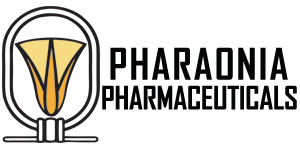

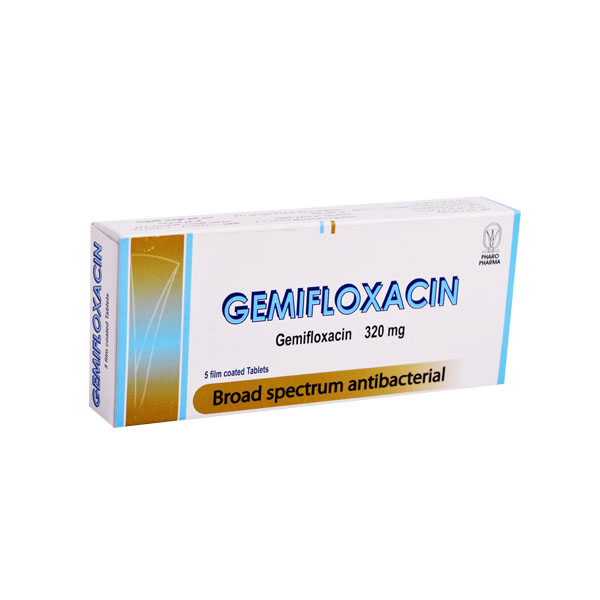
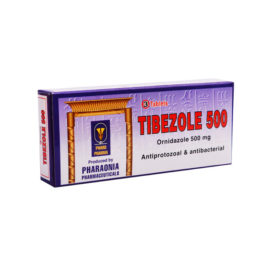
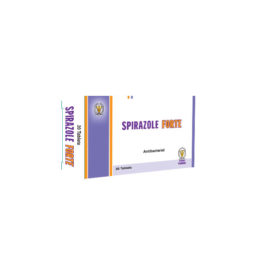
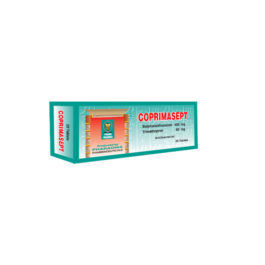

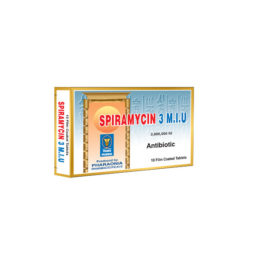
Reviews
There are no reviews yet.